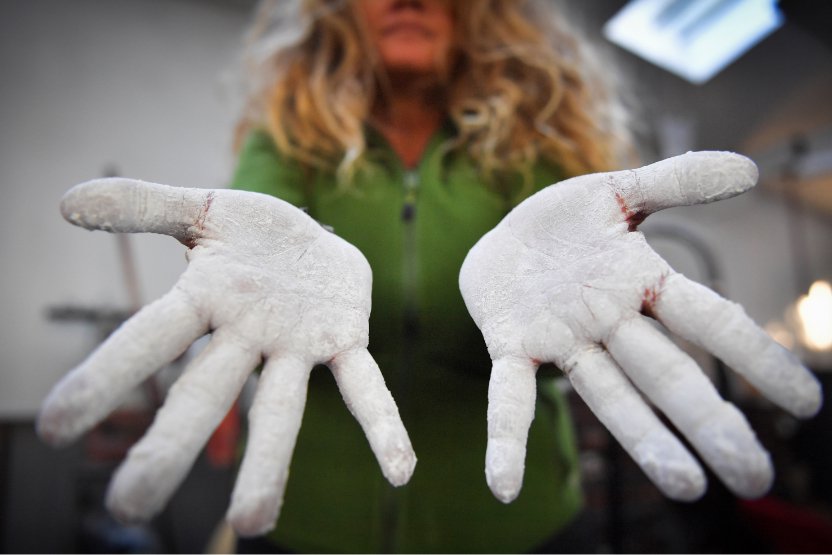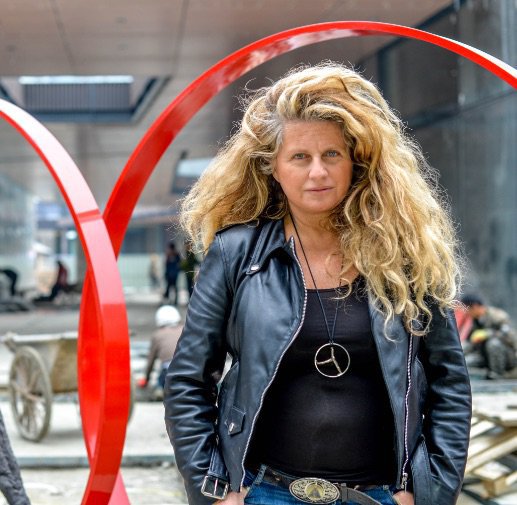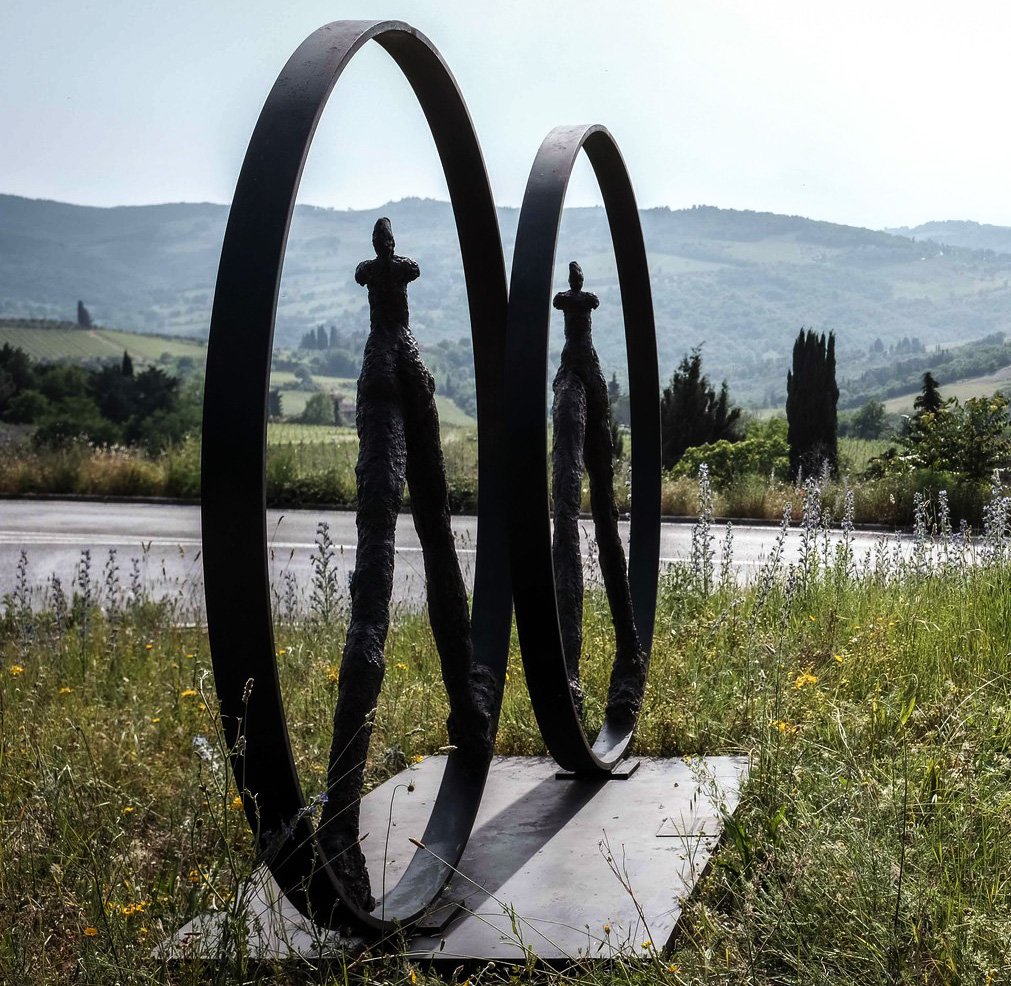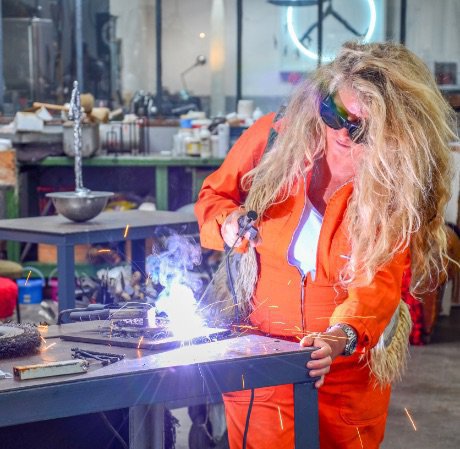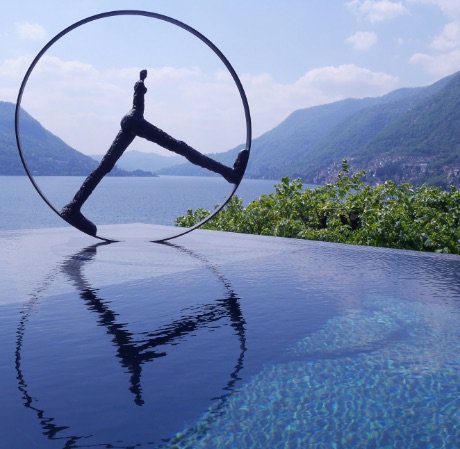A conversation
with guest artist Nathalie Decoster
Thanks to your philosophical approach, you have created a universal, humanist language of your own. What form does it take and where does it come from?
My philosophy is a very important part of my world. It addresses the human condition, which is why there is systematically a human figure in all my sculptures. These figures – which can be small or monumental – are universal messengers that everyone can easily identify with. They are always in a geometric shape, whether it’s a circle, a square or a cube, and are sometimes in movement. This faithful messenger explores the human condition and tries to guide us on our quest to find serenity. The foundations of this philosophy are inspired by Seneca: each of my sculptures whispers one of life’s secrets to us, as if providing an access code to a more tranquil world.
How important is the notion of time?
A lot of my works explore our relationship with time and nature, and are the fruit of my thoughts on the subject over a period of about ten years. The public knows my work mainly because of my iconic sculpture “Le temps qui passe”. It represents a man walking inside a circle and plays with a positive vision of the passing of time, which finally allows us to acquire wisdom.
We live in a society that is more and more worried about the lack of time and, in my work, I endeavour to convey hope and show that during our lifetime we are actually progressing towards wisdom.
How do you tackle human fragility in your sculptures?
It is true that I often address the notion of human fragility in my work. It is a fascinating aspect of life because it is something we continually try to hide from others and yet our fragility is full of charm and an interesting subject to explore. Thinking you can hide it is utopian.
One example would be my sculpture “Frailty Cube”, which presents a human figure inside a large cube-shaped structure. We could suppose that this monumental cube protects the person inside, but it is an illusion because in reality the wind passes right through it.
Your art is also laced with humour and derision in reaction to the absurdities of modern life. Can you give examples of how this is expressed in your work?
I also create much lighter and amusing sculptures such as “Saute-mouton”, which you will discover as part of the Panzano Arte trail. It is a reference to childhood, to the passing of time and the old wives’ tale that says counting sheep will help you fall asleep.
My idea with these works is to invite visitors to disconnect, something that is getting harder and harder in our modern societies in which everything is under control.
My sculpture “Dans la lune” for example explores the notion of letting go, something that today, paradoxically, we feel guilty about.
My sculptures endeavour to inspire the viewer to follow a more spiritual path.
What does the village of Panzano inspire in you and how does Panzano Arte resonate with your work?
My work takes me all over the world and
I am more often abroad than in France.
I have exhibited in China, Hong Kong, the United States, Brazil, and Mexico, as well as in numerous European countries. But having an exhibition here in Panzano is like a dream come true. The approach to life here in Panzano is very close to my own philosophy.
When the exhibition curator Mila Sturm described the project to me and spoke about its sensitive and humanist objective that is so close my own, I said yes without hesitation. People had told me that Tuscany is a magical region. The description is most appropriate! There is a real soul to the place, and a sincere authenticity. The people of Panzano are truly welcoming and attentive. They are also very committed to the project. There is a serenity here and a rare awareness of human values that I find particularly touching and which creates a real connection between Panzano and my work.
Would we be wrong in describing 2019 as an “Italian year” for you?
No, you wouldn’t! I have numerous projects in Italy in 2019. Of course, 30 of my sculptures and 3 very large format photos will be on show in Tuscany during Panzano Arte. You can also see my work in the gardens of the superb Villa Lario on the shores of Lake Como, where monumental sculptures will be exhibited until November 24th 2019. I will also be at the 58th Venice Biennale in an exhibition entitled “Nathalie Decoster, Intime Venice” that presents my sculptures in collaboration with local craftsmen, notably Venetian artisan and jewellery designer Marisa Convento.
